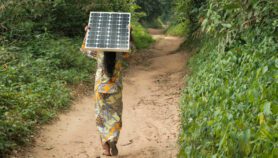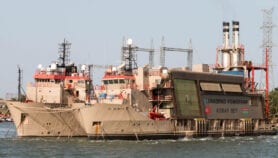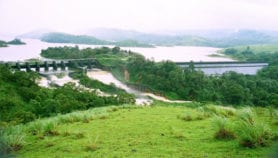Send to a friend
The details you provide on this page will not be used to send unsolicited email, and will not be sold to a 3rd party. See privacy policy.
[CAPE TOWN / WINDHOEK] A huge solar energy tower has been proposed to boost the electricity grid in Namibia.
At one and a half kilometres high and 280 metres wide — bigger than two soccer fields back-to-back — the tower could provide electricity for the whole of the Namibian capital Windhoek.
But neither a date nor a site for the proposed tower has been confirmed, though it is expected to be close to Windhoek, says South African mechanical engineer Alan Dunlop from the pan-African intellectual property firm Hahn & Hahn, which is involved in the project.
The operation of a solar tower involves heating air inside a vast transparent tent, several kilometres in diameter, at the base of the tower. This hot air rises inside a tall concrete chimney, driving wind turbines linked to generators. The tent can also be used to grow crops.
The proposed tower is about three times larger than anything similar on earth and though its running costs would be low, construction would cost at least US$900 million.
"One of the main reasons why commercial solar chimney power plants have not been built is that they have to be very large to be economically viable," says Theo von Backström from the Department of Mechanical and Mechatronic Engineering at South Africa’s Stellenbosch University.
Engineers at the university say their research — including a dozen journal papers and 14 conference papers — indicates that a large-scale tower is possible.
It has also been shown that solar chimney power plants can produce power at night. The water used for crops is heated during sunny weather and this heat is released back into the air during the night or during cloudy weather to keep the turbines going. No extra water is required — an important issue for a desert country such as Namibia.
Pretoria-based physicist Wolf-Walter Stinnes, the brains behind the Namibian tower, worked on a pre-feasibility study for a similar solar chimney in South Africa’s Kalahari desert up until 2000.
Stinnes said the project was dropped because its power was too expensive compared with coal power.
But given the price of oil and the issues raised by climate change, there has been renewed interest in solar chimneys in countries such as Australia, Egypt, India and Morocco.
According to a report in Engineering News, the Namibian government has agreed to cover half the costs of the US$780,000 pre-feasibility report once private funding has been obtained.
But Joseph Iita, Namibia’s permanent secretary for the Ministry of Mines and Energy, warns: "We are only prepared to work with serious investors and, despite so many investors showing interest in the field of energy generation, we haven’t seen any project taking off."













